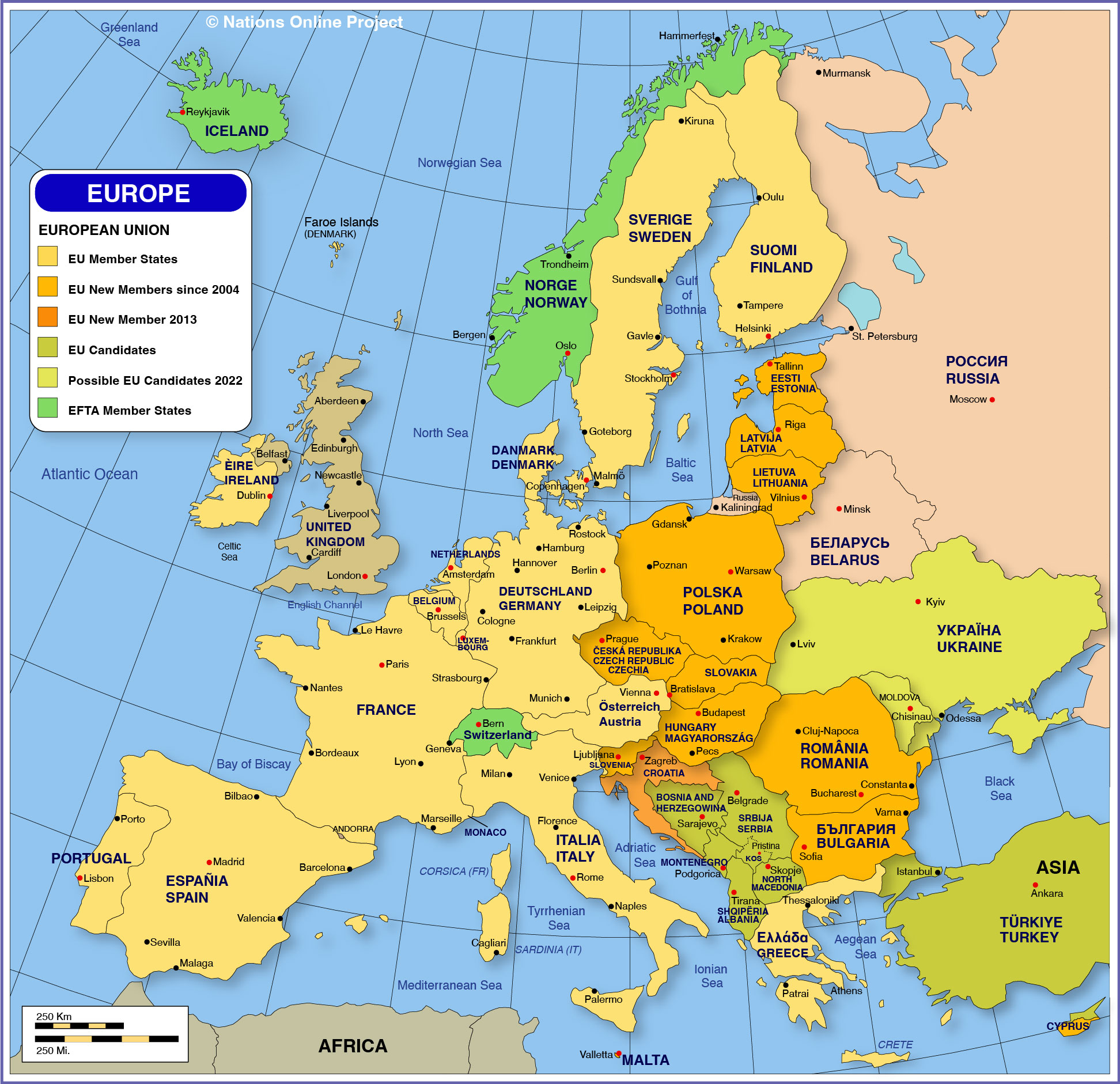
The Crowns of European Football: A Deep Dive into Club Trophy Comparison and Prestige
European club football stands as the zenith of the sport, a vibrant tapestry woven with history, rivalry, and unparalleled moments of glory. At its heart lies the relentless pursuit of silverware, tangible symbols of a club’s dominance, tactical prowess, and financial might. While the sheer joy of lifting any trophy is universal, not all European crowns are created equal. Their prestige, historical significance, financial rewards, and the sheer difficulty of winning them vary immensely, painting a complex hierarchy of achievement.
This article delves into the fascinating world of European club trophies, comparing their unique characteristics, charting their evolution, and ultimately, ranking their status in the eyes of players, clubs, and fans alike.
The Pinnacle: UEFA Champions League (UCL)
Without an iota of doubt, the UEFA Champions League (formerly the European Champion Clubs’ Cup, or European Cup) is the most coveted and prestigious club trophy in world football. Since its inception in 1955, it has been the ultimate arbiter of continental supremacy.
Prestige and Difficulty: The UCL is the "crème de la crème," featuring the champions and top-placed teams from Europe’s strongest leagues. The group stage alone is a minefield, followed by a brutal knockout phase where a single mistake can end a campaign. The tactical battles are intense, the quality of football is unparalleled, and the pressure is immense. Winning the "Big Ears" trophy signifies a club’s entry into an elite pantheon, a testament to sustained excellence over a demanding nine-month period. Its global reach is immense, with billions tuning in for the final, further cementing its status as the pinnacle.
Historical Evolution: The European Cup was initially a straightforward knockout tournament for league champions. Its rebranding to the Champions League in 1992, introducing a group stage and allowing multiple entrants from top leagues, significantly boosted its commercial appeal and competitiveness, making it even harder to win due to the increased number of top-tier opponents.
Financial Rewards: The financial incentives are staggering. Participation alone guarantees millions, while progressing through the stages and ultimately winning can net a club well over €100 million in prize money, not including broadcast revenue, sponsorship deals, and increased merchandise sales. This financial windfall directly impacts a club’s ability to attract and retain world-class talent, perpetuating a cycle of success.
The Resurgent Challenger: UEFA Europa League (UEL)
The UEFA Europa League (formerly the UEFA Cup) holds the position of Europe’s second-tier club competition. For decades, it was often viewed as a consolation prize, a slightly less glamorous stage for teams that didn’t quite make the Champions League cut. However, its standing has significantly evolved, particularly in recent years.
Prestige and Difficulty: While not reaching the heights of the UCL, the UEL is a genuinely challenging tournament. It features a diverse range of clubs, from fallen giants seeking redemption to ambitious mid-table teams looking for their moment in the sun. The sheer number of games, often involving extensive travel across the continent for Thursday night fixtures, makes it a physically and mentally demanding competition. The tactical variety is also broad, as teams from different leagues and footballing philosophies clash.
The Game Changer: The biggest boost to the UEL’s prestige came with the introduction of the direct qualification spot for the Champions League group stage for its winner. This single rule transformed the competition from merely a secondary trophy into a highly coveted pathway to the ultimate stage. For many clubs, winning the UEL is now seen as an incredibly valuable achievement, offering both silverware and the lucrative ticket to the UCL.
Financial Rewards: The prize money for the UEL is substantially lower than the Champions League, but it’s still significant, especially for clubs outside the financial elite. Crucially, the indirect financial benefit of UEL success – qualifying for the UCL – far outweighs the direct prize money, making it a truly valuable asset.
The Newcomer: UEFA Europa Conference League (UECL)
The UEFA Europa Conference League (UECL) is the newest addition to UEFA’s club competition landscape, launched in the 2021-22 season. Its creation was aimed at providing more European football opportunities for clubs from a wider array of UEFA member associations, particularly those from lower-ranked leagues, who often found it difficult to qualify for the UCL or UEL group stages.
Prestige and Difficulty: As the third tier, the UECL naturally carries the least prestige among the active European competitions. The quality of teams generally ranges from solid mid-table clubs in top leagues to champions and cup winners from smaller leagues. While it offers a taste of European football and a pathway to silverware, it does not yet command the same respect or attention as its older siblings.
Its Purpose and Value: Despite its lower standing, the UECL serves a vital purpose. For many clubs, particularly those who rarely feature in European group stages, it represents a monumental achievement. It provides valuable experience, a chance for players to shine on a continental stage, and a tangible trophy to add to the cabinet. Like the UEL, winning the UECL grants a direct qualification spot to the Europa League group stage, offering a progressive pathway up the European ladder.
Financial Rewards: The prize money for the UECL is the lowest of the three, but for the clubs participating, it can still represent a significant financial boost, often exceeding their annual domestic revenues. It’s an investment in their future, allowing them to improve infrastructure, invest in players, and grow their brand.
The Battle of Champions: UEFA Super Cup
The UEFA Super Cup is an annual one-off match contested between the winners of the UEFA Champions League and the UEFA Europa League.
Prestige and Difficulty: While it involves two European champions, the Super Cup is generally considered more of a ceremonial curtain-raiser to the new European season rather than a major trophy in its own right. It offers bragging rights and an early piece of silverware, but it doesn’t carry the same weight as winning a full-fledged tournament. Its difficulty is limited to a single match, which can be unpredictable.
Significance: It serves as a showcase for the two most recent European champions and offers an opportunity for a club to add another trophy to their collection, reinforcing their recent success. For fans, it’s an exciting early clash between two top teams.
Historical Footnotes: Defunct Competitions
European football’s landscape has evolved, and with it, some competitions have faded into history, leaving behind legacies that still resonate.
-
UEFA Cup Winners’ Cup (CWC): Active from 1960 to 1999, the CWC was a highly respected competition for domestic cup winners. At its peak, it was considered second only to the European Cup in prestige, often featuring strong teams who had triumphed in fiercely contested domestic cup competitions. Its demise came as a result of the expansion of the Champions League, which absorbed many of the top teams that would have otherwise played in the CWC. Its absence is still felt by some traditionalists who lament the loss of a unique pathway to European glory for cup specialists.
-
UEFA Intertoto Cup: Running from 1995 to 2008, the Intertoto Cup was a summer tournament that offered a backdoor route to the UEFA Cup for teams that hadn’t qualified through traditional means. It was seen as a pre-season competition, often featuring experimental lineups and carrying significantly less prestige than any of the main UEFA tournaments. Its purpose was ultimately absorbed by the expanded Europa League qualification rounds.
The Ultimate Goal: The Treble and Beyond
While individual trophies hold immense value, the ultimate testament to a club’s dominance in a single season is winning multiple major honors – a "treble."
-
Continental Treble (Domestic League, Domestic Cup, UEFA Champions League): This is the holy grail of club football. Achieving this feat signifies unparalleled excellence across domestic and European fronts. Clubs like Manchester United (1999), Barcelona (2009, 2015), Inter Milan (2010), Bayern Munich (2013, 2020), and Manchester City (2023) have etched their names into history by achieving this incredibly rare and difficult feat. It requires an exceptional squad depth, tactical flexibility, mental fortitude, and a touch of luck.
-
Other Trebles/Quadruples: While less celebrated than the Continental Treble, winning combinations like a domestic league and two European trophies (e.g., UCL and Super Cup, or UEL and Super Cup) or even a domestic treble (league and two domestic cups) are still remarkable achievements that highlight a club’s strength and consistency.
Beyond the Silverware: Intangible Benefits
The pursuit of European trophies goes far beyond the physical act of lifting silverware. The intangible benefits are immense:
- Reputation and Legacy: Winning European trophies, especially the UCL, indelibly marks a club’s place in history. It elevates their global standing, attracts new fans, and inspires future generations.
- Attracting Talent: Elite players want to play on the biggest stages and compete for the most prestigious trophies. Success in Europe is a powerful magnet for top talent, creating a virtuous cycle.
- Commercial Growth: Increased exposure from European campaigns leads to higher broadcasting revenues, more lucrative sponsorship deals, and greater merchandise sales, further solidifying a club’s financial stability.
- Fan Engagement: Nothing unites a fanbase more than a successful European run. The shared experience of epic journeys, dramatic comebacks, and triumphant finals creates lifelong memories and strengthens the bond between club and supporter.
Conclusion
The European club trophy landscape is a dynamic ecosystem, constantly evolving but always centered on the pursuit of glory. From the undisputed grandeur of the UEFA Champions League, through the challenging and increasingly vital UEFA Europa League, to the inclusive and developing UEFA Europa Conference League, each trophy offers a unique pathway to immortality for the clubs and players involved.
While the "Big Ears" remains the ultimate prize, every European trophy tells a story of ambition, struggle, and triumph. They are not merely pieces of metal; they are symbols of dreams realized, legacies forged, and the enduring passion that fuels the beautiful game across the continent. The comparison of these crowns ultimately reveals a hierarchy of achievement, yet each one, in its own right, represents a monumental success for the club fortunate enough to hoist it aloft.



